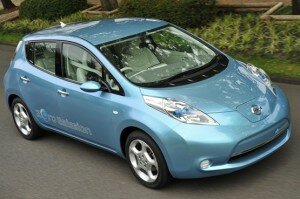“How many times have you heard the argument that small green actions lead to bigger ones?”
“I’ve heard it hundreds of times: habits that might scarcely register in their own right are still useful because they encourage people to think of themselves as green, and therefore to move on to tougher actions.”
“A green energy expert once tried to convince me that even though rooftop micro wind turbines are useless or worse than useless in most situations, they’re still worth promoting because they encourage people to think about their emissions. It’s a bit like the argument used by anti-drugs campaigners: the soft stuff leads to the hard stuff.”
“I’ve never been convinced by this argument. In my experience, people use the soft stuff to justify their failure to engage with the hard stuff. Challenge someone about taking holiday flights six times a year and there’s a pretty good chance that they’ll say something along these lines:
I recycle everything and I re-use my plastic bags, so I’m really quite green.”
“A couple of years ago a friend showed me a cutting from a local newspaper: it reported that a couple had earned so many vouchers from recycling at Tesco that they were able to fly to the Caribbean for a holiday.”
“The greenhouse gases caused by these flights outweigh any likely savings from recycling hundreds or thousands of times over, but the small actions allow people to overlook the big ones and still believe that they are environmentally responsible.”
“Being a cynical old git, I have always been deeply suspicious of the grand claims made for consumer democracy: that we can change the world by changing our buying habits. There are several problems with this approach:
• In a consumer democracy, some people have more votes than others, and those with the most votes are the least inclined to change a system that has served them so well.
• A change in consumption habits is seldom effective unless it is backed up by government action. You can give up your car for a bicycle – and fair play to you – but unless the government is simultaneously reducing the available road space, the place you’ve vacated will just be taken by someone who drives a less efficient car than you would have driven (traffic expands to fill the available road-space). Our power comes from acting as citizens – demanding political change – not acting as consumers.
• We are very good at deceiving ourselves about our impacts. We remember the good things we do and forget the bad ones.”
“I’m not saying that you shouldn’t always try to purchase the product with the smallest impact: you should. Nor am I suggesting that all ethical consumption is useless. Fairtrade products make a real difference to the lives of the producers who sell them; properly verified goods – like wood certified by the Forest Stewardship Council or fish approved by the Marine Stewardship Council – are likely to cause much less damage than the alternatives. But these small decisions allow us to believe that our overall performance is better than it really is.”
“So I wasn’t surprised to see a report in Nature this week suggesting that buying green products can make you behave more selfishly than you would otherwise have done. Psychologists at the University of Toronto subjected students to a series of cunning experiments (pdf). First they were asked to buy a basket of products; selecting either green or conventional ones. Then they played a game in which they were asked to allocate money between themselves and someone else. The students who had bought green products shared less money than those who had bought only conventional goods.”
“The researchers call this the “licensing effect”. Buying green can establish the moral credentials that license subsequent bad behaviour: the rosier your view of yourself, the more likely you are to hoard your money and do down other people.”
“Then they took another bunch of students, gave them the same purchasing choices, then introduced them to a game in which they made money by describing a pattern of dots on a computer screen. If there were more dots on the right than the left they made more money. Afterwards they were asked to count the money they had earned out of an envelope.”
“The researchers found that buying green had such a strong licensing effect that people were likely to lie, cheat and steal: they had established such strong moral credentials in their own minds that these appeared to exonerate them from what they did next. Nature uses the term “moral offset”, which I think is a useful one.”
“So perhaps guilt is good after all. Campaigners are constantly told that guilt-tripping people is counterproductive: we have to make people feel better about themselves instead. These results suggest that this isn’t very likely to be true. They also offer some fascinating insights into the human condition. Maybe the cruel old Christian notion of original sin wasn’t such a bad idea after all.”
I disagree with the last sentence, and I feel that the research suggests striving for continual balance of “telling it like it is” in appropriate doses that won’t overwhelm and cause inaction, with giving hope when these new realistic actions are done.




